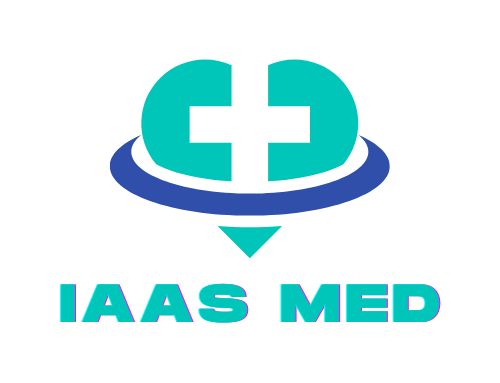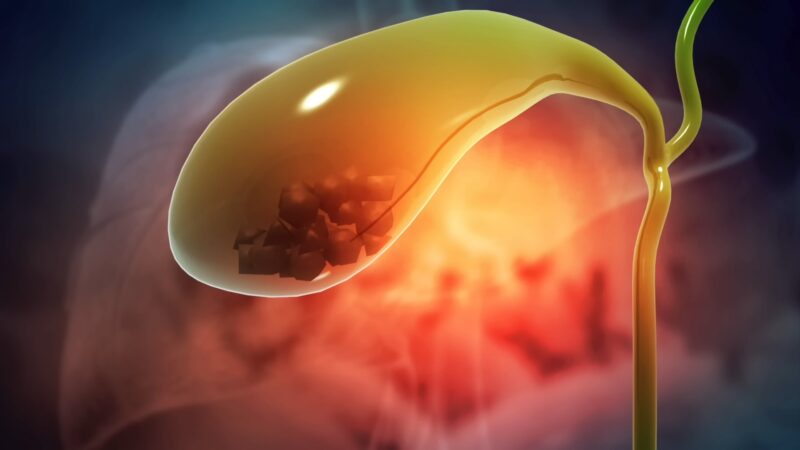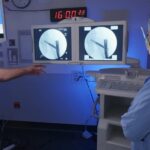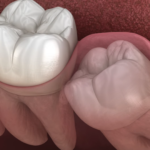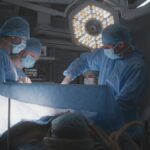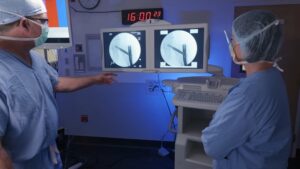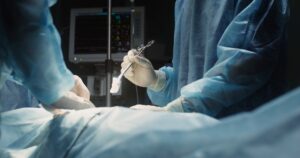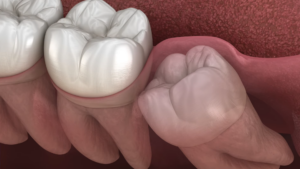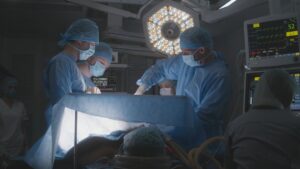The gallbladder is a small, pear-shaped organ situated beneath the liver. Its primary function is to store and concentrate bile, a fluid produced by the liver that aids in the digestion of fats.
A contracted gallbladder, often detected during medical imaging tests, is a condition where the gallbladder appears shrunken or smaller than usual. This condition can be a normal response to physiological factors, such as having eaten a meal, or it could indicate certain health issues.
Causes of Gallbladder Contraction
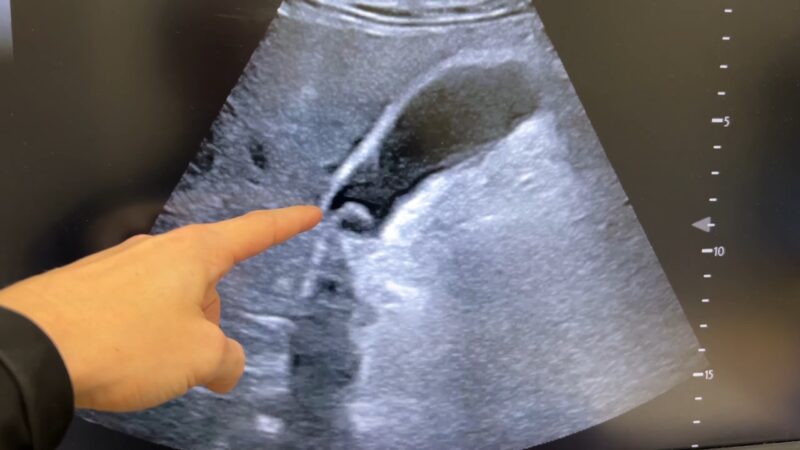
A contracted gallbladder can result from various causes. In many cases, it’s simply a response to a meal. After eating, the gallbladder contracts to release bile into the small intestine to assist in digestion. However, in some instances, a persistently contracted gallbladder could indicate gallbladder disease or other issues.
Chronic gallbladder disease, gallstones, or inflammation (cholecystitis) can lead to abnormal contraction. Additionally, other conditions such as biliary dyskinesia, where the gallbladder does not empty properly, may also be responsible.
Symptoms and Signs

Often, a contracted gallbladder is asymptomatic, especially if it’s a normal response to eating. However, if the contraction is due to an underlying issue, various symptoms can occur. These include pain in the upper right or middle abdomen, nausea, vomiting, and discomfort that worsens after eating fatty foods. Chronic gallbladder conditions might also cause bloating, indigestion, and a sensation of fullness.
Diagnostic Procedures
The diagnosis of a contracted gallbladder typically involves imaging tests. Ultrasound is the most common and non-invasive method used to visualize the gallbladder. It can detect gallstones, inflammation, and the size and shape of the gallbladder.
Other diagnostic tools may include a hepatobiliary iminodiacetic acid (HIDA) scan, which assesses the functioning of the gallbladder and bile ducts, and MRI or CT scans for more detailed images.
Treatment Options
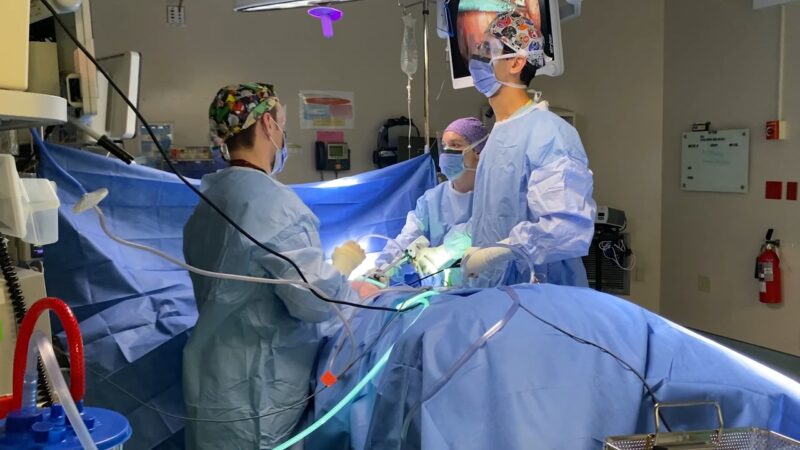
Treatment for a contracted gallbladder depends on the underlying cause. In cases where gallstones or inflammation are the causes, treatment may involve medication to dissolve gallstones or surgery to remove the gallbladder (cholecystectomy).
In less severe cases or where surgery is not an option, dietary modifications and medications to manage symptoms might be recommended. Biliary dyskinesia, a functional gallbladder disorder, is often treated with medications that improve bile flow and dietary changes.
Lifestyle and Diet Modifications

In addition to medical treatment, lifestyle and dietary modifications can play a significant role in managing symptoms associated with a contracted gallbladder. A diet low in fat and high in fiber can help.
Patients are often advised to eat smaller, more frequent meals, avoid fatty and fried foods, and increase their intake of fruits, vegetables, and whole grains. Regular exercise and maintaining a healthy weight are also beneficial.
Monitoring and Follow-up
Regular monitoring and follow-up are crucial for individuals diagnosed with a contracted gallbladder, especially when it is linked to gallbladder disease or other underlying conditions. Follow-up appointments with a healthcare provider typically include physical examinations, discussions about symptoms, and possibly repeated imaging tests.
These follow-up sessions help in assessing the effectiveness of the treatment and making necessary adjustments. They also serve to monitor for potential complications such as gallbladder rupture or the development of gallstones.
Understanding Surgical Interventions
In cases where surgery is necessary, such as cholecystectomy (gallbladder removal), understanding the procedure, its risks, and its benefits is important. Cholecystectomy can be performed using laparoscopic techniques, which are minimally invasive, or through open surgery.
The choice of procedure depends on the patient’s overall health, the severity of the gallbladder issue, and the surgeon’s expertise. Post-surgical care is crucial for recovery and includes managing pain, preventing infection, and gradually returning to normal activities.
Non-Surgical Therapies
For individuals who cannot undergo surgery or choose not to, non-surgical therapies can be alternatives. These may include medications to manage pain and inflammation, treatments to dissolve gallstones, or lifestyle interventions.
It is important to discuss these options thoroughly with a healthcare provider to understand their effectiveness and potential side effects.
Complications and Risks
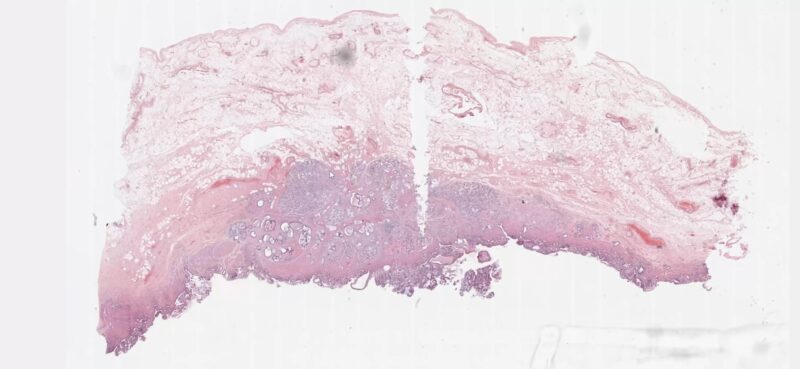
Understanding the potential complications and risks associated with a contracted gallbladder, whether treated surgically or non-surgically, is important. Complications can include infection, bile duct injury, and in rare cases, gallbladder cancer.
Chronic gallbladder disease without proper treatment can lead to serious issues such as a ruptured gallbladder. Being aware of these risks allows for timely intervention and prevention.
Preventive Measures

Preventive measures play a significant role in reducing the risk of gallbladder problems leading to contraction. These include maintaining a healthy weight, eating a balanced diet, regular physical activity, and managing underlying health conditions that may contribute to gallbladder issues, such as high cholesterol or diabetes. Regular health check-ups can also help in early detection and prevention.
FAQs
Can a contracted gallbladder lead to digestive problems?
Yes, a contracted gallbladder can lead to digestive issues. Since the gallbladder plays a role in storing and releasing bile for fat digestion, its abnormal contraction can affect this process, leading to symptoms like indigestion, bloating, and changes in bowel movements.
How quickly do symptoms appear if a contracted gallbladder is due to gallstones?
Symptoms due to gallstones in a contracted gallbladder can vary. Some people might experience sudden and intense pain, while others may have gradual onset of symptoms. The timing of symptom appearance can also depend on factors like the size and location of the gallstones.
Are there any specific tests to confirm that a gallbladder is contracted due to gallstones?
Ultrasound is the primary tool for detecting gallstones in a contracted gallbladder. However, if the ultrasound is inconclusive, a HIDA scan or an MRI may be performed to provide more detailed images and confirm the presence of gallstones.
Can lifestyle changes alone resolve a contracted gallbladder?
Lifestyle changes, such as a healthier diet and regular exercise, can alleviate some symptoms associated with a contracted gallbladder, especially if related to diet or obesity. However, they may not resolve all causes, such as gallstones or chronic inflammation, which might require medical or surgical intervention.
Is a contracted gallbladder a common condition in pregnant women?
Pregnant women may experience gallbladder contraction more frequently, as hormonal changes can slow gallbladder movement and lead to gallstone formation. Also, the growing uterus can physically affect the gallbladder’s position, impacting its function.
After gallbladder removal, can the gallbladder contract again or cause symptoms?
Once the gallbladder is removed (cholecystectomy), it cannot contract or cause direct symptoms. However, some individuals may experience changes in digestion or develop a condition called postcholecystectomy syndrome, which can mimic gallbladder-related symptoms.
Final Words
A contracted gallbladder can range from a normal physiological response to a sign of an underlying health issue. Diagnosis involves imaging tests and possibly further examinations to determine the cause. Treatment varies from dietary changes and medications to surgical interventions, depending on the severity and underlying cause.
Regular monitoring, understanding the risks and complications, and taking preventive measures are key to managing this condition effectively. Working closely with healthcare providers to develop a personalized treatment plan is essential for optimal health and quality of life.
